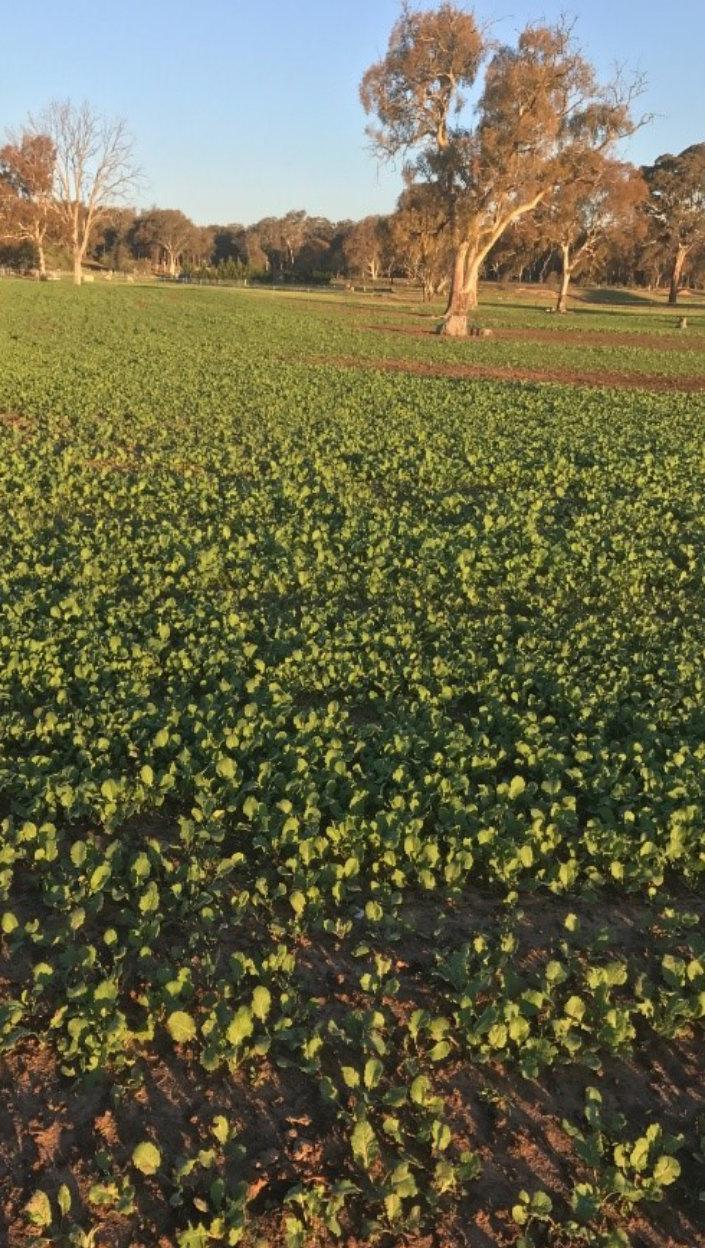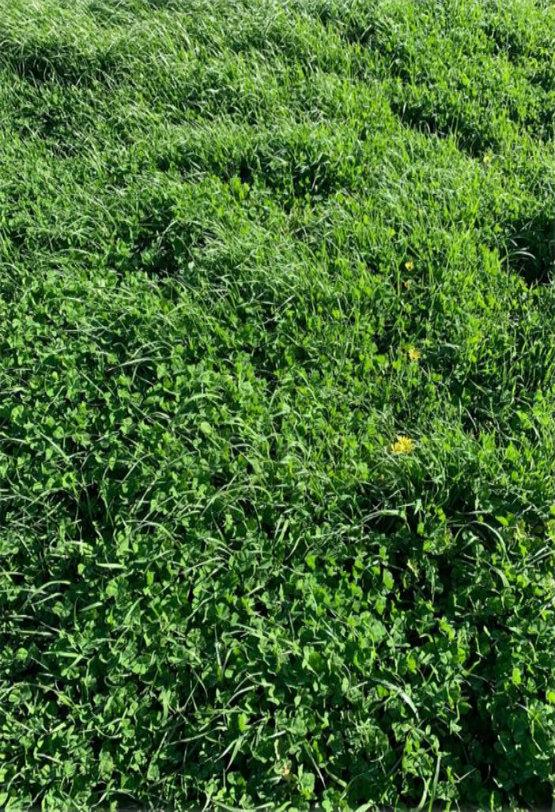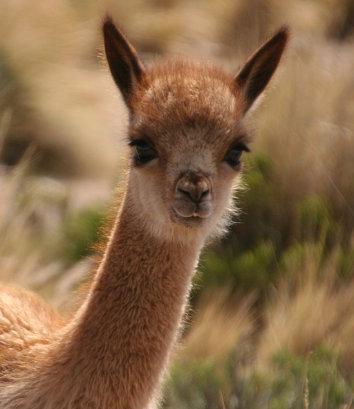
15 minute read
Pasture Tips Post Drought
Pastures Tips Post Drought
By Rob Harborne Eaglewood Alpacas Murrumbateman NSW
Advertisement
By now most breeders would have experienced some good rain. With the rain comes feed and potentially weeds. The following are a few suggestions to help improve the feed quality and quantity. FERTILITY DECREASE
If you have not fer�lised for a few years you may have the feed growing a li�le more slowly than you expected. This may also be a consequence of ea�ng your grass down too much. The plant needs leaf area to photosynthesise.
Fer�lity is the key driver to produc�vity and it is probably the key reason most camelid farms have a lack of good quality dry ma�er produc�on. The be�er the dry ma�er produc�on i.e. pasture growth the be�er the performance of your animals will be.
Na�ve pastures do also benefit from fer�liser input but will never be highly produc�ve and they are dominant in the summer months.
SOLUTION
Apply between 125-200kg/ Ha of Single Super phosphate annually. Also, with this applica�on if you can get some clover seed and poten�ally Italian ryegrass seed and add to the fer�liser this will assist in dry ma�er produc�on going into Autumn/Winter and Spring. Call me for specific varie�es if you like.
WEED INTRUSION
With the rain comes weeds. Weeds are also more dominant when the ground cover decreases below 70% groundcover. The summer weeds will burn off in the first frost. The broadleaf weeds such as Pa�erson’s curse and capeweed will germinate in the autumn which will require a broadleaf spray in the May-August months. It is important to a�end to the weeds otherwise they will out compete for your pasture in the spring�me. Other problem grass weeds include barley grass which can be par�cularly problema�c in the spring once it has set seed. The seeds can get into the eyes.
The other major problema�c grass weed is silver grass or vulpia. This grass is highly invasive and can have up to 4000 plants per square metre hence stopping more produc�ve pasture species from thriving. It is very low in digestability and has a maximum protein content of 4 %.
SOLUTION
Spray when and where appropriate. Always get advice on what to spray. Remember if you spray there is a 14 day withholding period post spraying i.e. you cannot have the animals in that paddock for 14 days. Lesser rates, (usually half) of chemical can be used in a spray graze opera�on. Always read label for instruc�on or seek advice.
(Spray graze programme is a commonly referred to agricultural prac�se where half rates of chemicals are applied to a weed and then animals graze the paddocks 14 days a�er applica�on. The weeds fixate sugar and make them more palletable and also in the case of Pa�ersons Curse present the leaves so they can be grazed more effec�vely.)
When spraying always remember �ming is extremely important. Spray before the onset of flowering or the produc�on of seed heads. Once the seeds are produced it is too late to spray and have an effect.
IMPROVING PASTURES
Oversow paddocks with a mixture of short term pasture species to bolster feed availability. Ryegrass is a great op�on. This can be applied by spreaders, harrowing and then leaving the paddock unstocked. Otherwise the emerging plants may be pulled out by the roots by the animals grazing.
Clover inclusion will add dry ma�er, nitrogen fixing plants plus high quality high protein plant material. If you are worried about clover bur that is primarily derived from sub clover – there are many other types of clover that do not have clover bur.



3
weeks apart
The top photo on le� is only 3 weeks before the photo (right) in spring �me 2018. I ran 110 alpacas on 3 Ha for 8 weeks on this paddock before res�ng the paddock.It was grazed 4 �mes.
If you would like further informa�on in regard to accessing seed and fer�lsier types please contact me. Rob Harborne Ph: 0417998897 E: info@eaglewood.com.au

1. Short term grasses and clovers can just be spreader, harrowed in or mulched in. Either use annual or Italian ryegrasses as these varie�es do not lead to staggers. Applica�on rate for oversowing grasses is dependent upon the species but for ryegrasses it is 10-20kg/ HA.
2. Another great op�on are forage brassicas that are highly produc�ve and provide an excellent grazing op�on for alpacas. They do however need the country worked (ploughed to a fine �lth). The seed is very small, you can then either sow it or spread it and harrow a�er. The benefit is that extremely high stocking rates can be achieved 40-60 DSE ( 20-30 females per HA) Forage brassicas are an annual. The other excellent benefit is that whilst your animals on mass are on these paddocks other parts of your property are res�ng and allowed to recover.

Clover and ryegrass pasture spread in March. Italian ryegrass at 15kg/ Ha plus Clover mix @7kg/ Ha plus Single Super Phosphate @ 125kg/ Ha mixed and broadcast by fer�liser Spreader. Picture taken April 13 sown on March 52. Greenland Forage brassica from Seed force sown at 4 kg/ Ha with 100kg Cropli� 15 fer�liser / HA Sown on March 5 2020 and seen here April 16 and being grazed.Just over 5 weeks. Approximate cost Seed $56/ha plus fer�liser $100/ Ha plus ground prepara�on.

CONCLUSION
Good quality pastures requires nutri�on and management.
Good quality pastures can return the investment many �mes over in savings in feed, increased animal produc�vity and reduced stress to the property owner.
Everything that I have discussed is easily manageable .
Do nothing and don’t expect anything to change on your farm.
If you are unsure of the steps to take to increase your pasture quality and quan�ty seek advice from a trained professional.
CAMELIDS IN THE KLEIN KAROO
By Alison Notley, Helderstroom Alpacas, Western Cape, South Africa

Never in my wildest dreams would I ever have believed I would leave my country as a refugee. An exaggera�on perhaps but let's say we le� our home, and Zimbabwe, for all the wrong reasons. Mr Mugabe had made a real pig's ear of what was once the breadbasket of Africa and things were becoming pre�y untenable when we decided to drive south in 2002 and start a new life in the Western Cape of South Africa.
To say moving home, nay moving countries, in our mid-fi�ies was a challenge is perhaps sta�ng the obvious. Christopher and I are born Brits who loved Zimbabwe perhaps because of its Englishness in the middle of Africa and suddenly to find ourselves alien in new surroundings certainly gave us a feeling of disloca�on. A total reorienta�on was needed and a change of mindset.
That awful cliché - one door closes and another one opens - is actually pre�y true. I mean we would never have found alpacas if we'd stayed in Zimbabwe. A series of coincidences led us to Helderstroom, a tumbling down almost ruin of a house over 300 years old and ... with a fascina�ng English history. Almost derelict it most certainly was but we have stunning 360 degree views from the house in what is the heart of fruit and wheat growing country. Being Brits we felt an empathy with the abandoned farmhouse and the secrets it held. In its �me Helderstroom had been a hun�ng lodge for Lord Charles Somerset, Bri�sh governor of the Cape from 1814 to 1826. Prior to that, around 1697 in the Willem van der Stel days it had served as a remount sta�on. More importantly for us it was within our budget. Renova�on began ...
Helderstroom means clear water or to be precise, clear stream. Helder - clear; stroom - stream. We are situated in the Klein Karoo (li�le Karoo), a low rainfall area one and a half hours' drive from Cape Town. Much of our water is indeed pure clear mountain water.
Reading a magazine whilst flying to Botswana on a work trip in 2003 my interest was piqued by an ar�cle on the first alpacas to have recently reach South Africa. This had been the brainchild of a re�red den�st who had gathered together enough punters to encourage him to import two plane loads of alpacas from South America. Our own research began almost immediately. Our two horses didn't need all the grazing we had here - maybe a few alpacas were the answer. Five pregnant female huacaya alpacas, our start-up pack from Chile, were on the second plane. It has been an exci�ng journey becoming involved right from the beginning and being part of an embryonic industry with everyone finding their own way and suppor�ng one another.
Alpaca fibre drying

We are a fledgling alpaca industry in South Africa. The South African Alpaca Club was formed in 2001 and promulgated into a Society in 2003. We are just over 60 members. It is difficult to be precise as to how large the na�onal herd is since not all owners register their alpacas with the South African Studbook, but probably 4500 is close - which probably equates to a small sheep farm in Australia!
In 2015 the SAABS brought to the Cape Professor Chris Cebra, a world renowned alpaca veterinarian from Oregon State University. This was our first alpaca health conference. Two years ago in 2018 we flew Melbourne's Dr Jane Vaughan here to talk to our members on alpaca health and husbandry. The three day conference was a�ended not only by alpaca breeders and SAABS members but also veterinarians from across the country. We can only benefit ourselves if as a Society we assist in training our vets in camelid medicine. On her way to Cape Town Jane transited in Johannesburg where she spoke to fi�h year students at our Onderstepoort Veterinary Ins�tute at the University of Pretoria.
With Covid restric�ons in place it is obviously impossible to bring Jane or anyone else to South Africa at this �me so instead as a follow up we recently ran a series of Zoom webinars with Jane. These lectures were really well received. Zoom seems the way to go!

Having bred our own herd numbers up over 17 years, and sold some along the way, we are now cu�ng back from 55 to around 25. We are on just under 12 acres and our grazing is mainly kikuyu. A grass na�ve to certain regions of East Africa (and home to the tribe of the same name) kikuyu grows rapidly, its roots forming an under the surface mesh which regenerates quickly a�er long dry spells. We supplement with a 15 per cent protein horsemeal, a game pellet, lupin seeds if we can get them (as recommended by Jane Vaughan) and soyabean meal if we can't, oat hay ad lib and lucerne to lacta�ng mums and when grazing is poor. Vitamin ADE is administered during the winter months although alpacas in the shade of high mountains and with fewer hours of daylight need more vitamin D supplement than ours in the more open terrain. We vaccinate twice-yearly for clostridial diseases and on the whole our herd enjoys good health with pre�y robust crias.
Most of us shear between September and November, before the onset of the high summer temperatures when we can go to 38-40 degrees cen�grade. We resist tempta�on to leave that par�cularly good fleece another year to shear it a bit longer. It is just too hot and we do everything we can to relieve heat stress and or skin problems. While do not have the whole pantone of alpaca colours in our herd we are able to purchase fleeces from other breeders.
Unfortunately op�ons for processing alpaca fibre are few. We decided right from the start to go the handspun route at Helderstroom and create local employment. In the very early days one of our breeders imported a Belfast mini-mill from Canada and this worked well for a number of years. It was then sold and its new owners expanded and introduced industrial processing machinery. However it became uneconomical for the mill owners to run small batches of alpaca on the industrial plant and too costly for breeders to turn their raw fibre into yarn. We then found a cashmere mill in the Eastern Cape willing to wash and card our fibre. This works beau�fully, and then it comes back to us for spinning.
This is fine for us at Helderstroom but is not fine for most of our breeders who understandably would prefer to have fibre processed right through to spun yarn. We will con�nue to hand spin at Helderstroom but I look forward to the day when my SAABS members have a mill which will process raw fibre to spun yarn at affordable rates.
I laughed out loud this week - on an American alpaca Facebook group someone posed the ques�on, "which mill do people find best for processing into rovings?" "Which mill?" I thought to myself - you mean you have a choice of mills?! Then I read the many replies. My goodness - talk about spoiled for choice! There is an expression in Afrikaans, "Boer maak a plan". (boer means farmer). We sure do ...
For us at Helderstroom Alpacas the cashmere mill route worked well. The thrust of our own business is handeverything. Brenda Willemse and Theresa Jansen have been with us since 2009 which was shortly a�er we started hand spinning. You could say they are the backbone of our li�le business. Every single garment we produce starts off on the spinning wheel and is either kni�ed on kni�ng needles or woven on a hand loom. We don't do machines. Our kni�ers work in the comfort of their own homes as do my two weaving ladies.
Now too our friends at the cashmere mill have declared the small quan��es of alpaca batches uneconomical for them to process. Aaagh - stymied again! This �me we have taken the bull by the horns. We have a bath outside our back door. It was the smallest 'human' bath we could find when we renovated Helderstroom and we built it in at waist height primarily to wash horse blankets and spaniels. Once we began spinning alpaca we found it perfect for washing skeins of spun yarn. But wait, there is be�er to come - we have worked out that we can fit two supermarket baskets full of fibre in this bath. A supermarket basket can take a huge amount of fibre and when wet shrinks to almost nothing. We are careful not to agitate the fibre - for this only clumps it together in globs that become impossible to undo. We then dry the fibre in bags on the washing line. Once dry we manually pick it open.
We have a small drum carder but as I type this we are awai�ng the imminent arrival of a motorised carder we have just purchased from America. This will mean that as from this year's shearing, i.e. October 2021, we will be completely selfcontained at Helderstroom - from shearing, skir�ng, tumbling, cleaning (of VM), washing, drying, picking carding and then spinning and producing finished garments. "Boer maak a plan"! A local fruit packing shed on a neighbouring farm provides employment for many farm workers' wives. Luckily for us our own 'harvest' is during down �me for the fruit growers. Hence we are able to gather up two or three ladies to help clean fibre - a thankless but necessary task. You cannot call alpaca one of the finest fibres on the planet if it is full of grass seeds. Producing women's jerseys, jackets, cardigans and ponchos is the thrust of our business and a comprehensive range of babywear and toddler clothing. We hope our baby shawls become heirloom pieces. Another whole range of accessories - hats and gloves - and woven scarves and shawls in varying widths, lengths and textures complete the picture.
Thankfully lockdown since March last year has not prevented us from working. Home is work and work is home and we live in a fairly isolated area. Brenda and Theresa worked from their homes and would bring their spun yarn every second week and take away more raw fibre to work with. Brenda is a single mum of three young children and lives in one of our own farm co�ages and Theresa lives on a neighbouring fruit farm with her husband and two children. With schools closed they have needed to be with their children. Both are back working in our studio now.
Our sales did not really take too much of a dive during lockdown thanks to a cold winter and social media! Instagram and Facebook now play a big part in our marke�ng programme and during lockdown we also launched our online shop. There are people in South Africa we call swallows. These swallows, who would normally fly to warmer climes during the cold months in the Cape, were not able to last winter. I like to think some of them spent their money on luxurious alpaca clothing instead.
So many people facing so many difficult challenges this year, definitely a �me for being grateful for what have and not what we don't. A few changes may be made here and there but we are one of the lucky ones - we have alpacas.

Lilian modelling a hand knit alpaca coat
Find our online shop at www.helderstroomalpacas.co.za









